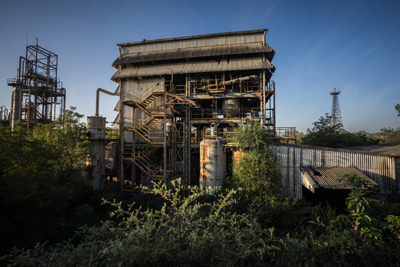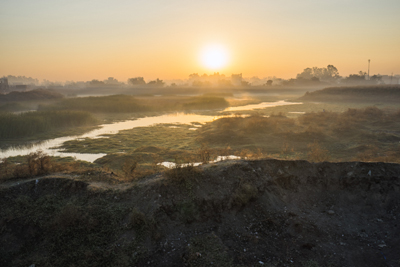
Over the last week Indian newspapers, including the Times of India, have been reporting that work is proposed to start imminently on a memorial to the Bhopal gas tragedy at the very the scene of the disaster- the abandoned Union Carbide pesticide factory which still sits, rotting, almost thirty-two years after the toxic gas release.
Whilst the disaster survivors and campaigners agree there should be a memorial to the tragedy and have already created their own, wonderful museum nearby there is a genuine, grave concern as to how this work impacts on the overall toxic contamination at the site.
The memorial proposal does not appear to address the serious toxic contamination issues and would seem to propose, once again, only the removal of the solid toxic waste lying above ground on the factory premises.
The Indian Express reports that the Minister of State for Bhopal Gas Tragedy Relief and Rehabilitation, Vishvas Sarang, said 10 tonnes of toxic waste lying in the factory has been disposed of by Ramki Private Limited, Pithampur and that “We will request the Central Pollution Control Board to incinerate the remaining waste lying in the factory.”
In the Times of India, Satinath Sarangi of the Sambhavna Trust, described the overall toxic contamination situation related to Union Carbide’s dumped waste and, given these facts it seems clear that removing only the toxic waste stored above ground can only represent a cosmetic clean-up:
“At least 8 studies carried out by government scientific and regulatory agencies have pointed out the presence of highly toxic chemicals and heavy metals in the soil and ground water inside the factory as well as in the groundwater in the areas surrounding the factory. The latest of these studies, that by the Lucknow based Indian Institute of Toxicology Research (IITR) has reported presence of highly toxic contaminants such as Carbaryl, Aldicarb, HCH isomers and chlorinated benzenes & heavy metals such as Mercury, Lead and Chromium in soil inside the factory.”
“The IITR report published in 2013 also documented the presence of Alpha BHC, Dichlorobenzene, Trichlorobenzene, Aldrin, Hexachloro cyclohexane and Carbaryl in ground water around the factory premises. The study reported contamination of ground water in 22 communities, some as far as 3 kilometres away from the factory. The contaminants found in significant concentrations are known to cause cancers and birth defects and cause injury to the brain, lungs, liver, kidneys and other organs. Samples of ground water taken last year from areas outside the 22 communities and tested at the State Research Laboratory of the Public Health Engineering Department have shown that the contamination has spread farther and is finding new victims. As stated in government scientific reports, some going as far back as 1991, much of the ongoing contamination is being caused by several thousand tonnes of poisonous wastes buried in 21 unlined pits inside the factory premises from 1969 to 1984.”
In addition to the waste described by Sarangi, lies a further vast expanse of highly contaminated land comprising the remains of three enormous solar evaporation ponds originally used as a dump for liquid waste. The toxic sludge which should have been removed and treated, as a part of the production process whilst the factory was in operation, remains to this day. This is widely believed to be another contributing factor in so far as the contaminated water crisis is concerned since the ponds have been leaking for decades and monsoon rains ensure the toxic chemicals leach down into the groundwater aquifer.
In short, the proposed memorial plan seems ill-advised. The Union Carbide factory will continue poisoning people for years, even decades to come unless all of its toxic chemical waste is removed.
More on waste disposal issues CLICK



